Matter is composed of molecules, molecules are composed of atoms, and atoms are composed of positively charged nuclei and negatively charged electrons surrounding it. When heated to a high enough temperature or for other reasons, the outer electrons break free from the nuclei and become free electrons. Electrons leave the nucleus, a process called “ionization”. The world of matter is generally divided into three states: solid, liquid and gas, when matter is cold it is a solid solid, as it heats up it becomes liquid, when more heat is applied you get a gas, However, the story doesn’t end there, as you add more heat, the extra energy and heat breaks down the neutral atoms and molecules in the gas into the typical positively charged ions and negatively charged electrons, the first Four-state, ionized “gas”. At this time, the matter becomes a uniform “paste” composed of positively charged nuclei and negatively charged electrons. The total amount of positive and negative charges in these ionic plasmas is equal, so it is approximately electrically neutral, so it is called plasma.
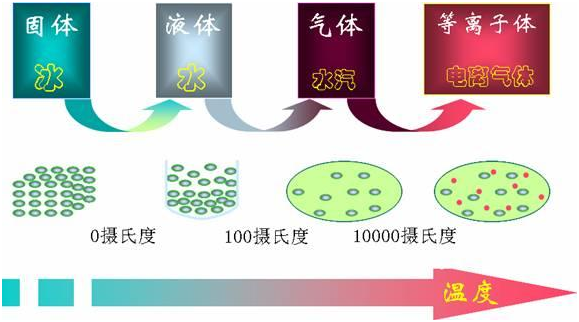

Natural Phenomenon of Plasma

On Earth, plasma matter is far less than solid, liquid, and gaseous matter, but in the universe, plasma is the main form of matter, and 99% of ordinary matter in the universe is in a plasma state, such as stars (including the sun), Interstellar matter, as well as the ionosphere around the Earth, are all plasma. In fact, the sun is a huge plasma ball, the main element is hydrogen, followed by helium, and other trace elements, the sun is a high-temperature purgatory, each particle is restless, unable to form a peaceful atomic family. Auroras are high-speed particles blown by the solar wind, bound by the geomagnetic field, rushing to the poles, impacting molecules in the air, causing electrons to escape into a plasma state, forming a beautiful landscape at the poles. The path that lightning travels, air molecules are ionized, forming plasma.


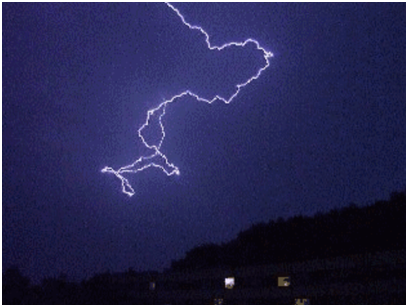
Application of Plasma Technology
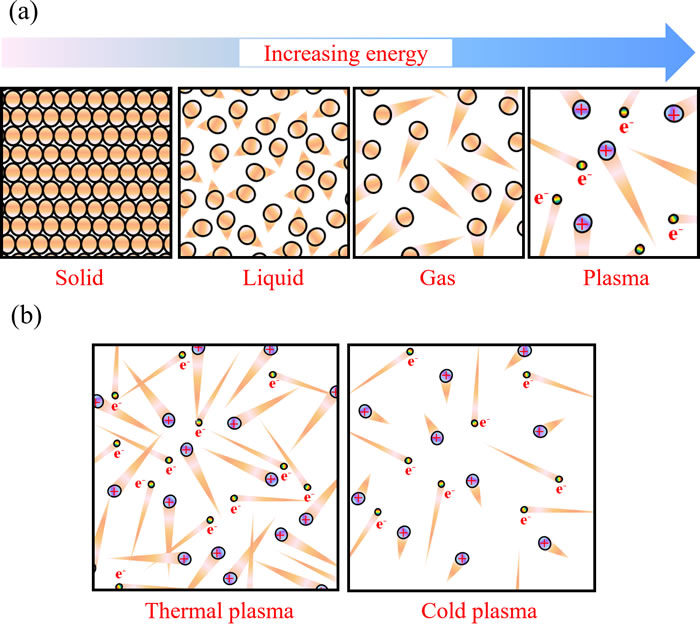
Plasma refers to a partially or completely ionized gas, and the sum of the positive and negative charges carried by free electrons and ions completely cancels out, showing a neutral charge on a macroscopic scale. The positive and negative electrons generated by the atoms deprived of part of the electrons and the atoms are ionized. Composed of ionized gas-like substances, plasma can be divided into two types: high temperature and low temperature plasma.

The most common plasma are high-temperature ionized gases, such as luminescent gases in arcs, neon lights and fluorescent lamps, as well as lightning, aurora, etc. An important application of high-temperature plasma states is controlled nuclear fusion. The application of the plasma state in industry has a very broad prospect. The low-temperature plasma state is used for cutting, welding and spraying, as well as the manufacture of various new electric light sources and displays. Electron gas in metals and carriers in semiconductors and electrolyte solutions are also used. Can be seen as plasma. Charged particles give plasma conductive properties, so plasma technology is used to make a variety of items we use every day. Computer chips, neon lights, and even the metallic coating on the inside of a bag of potato chips are made using plasma technology. There is also a plasma color TV PDP, which is the application of the plasma state in the home. It is to fill a mixed gas between two thin glass plates, apply a voltage to generate ion gas, and then discharge the plasma gas to react with the phosphor in the substrate. Produces a color image, giving you a color representation of the pixels on the screen.

Plasma lamps are decorative lamps that were most popular in the 1980s. The plasma lamp was invented by physicist Nikola Tesla, who conducted an experiment to study high-voltage phenomena by passing a high-frequency current through a glass tube. Tesla called it an inert gas discharge tube. Modern plasma lamps designed by Bill Parker. However, there are drawbacks to this type of lamp. Be careful when placing electronic equipment (such as a computer mouse) near or on top of the plasma lamp: not only does the glass case heat up, but the high voltage can also cause a lot of static electricity to accumulate on the equipment, even with plastic protection. The same goes for the shell.

In plasma rockets, a combination of electric and magnetic fields is used to break apart the atoms and molecules of the propellant gas into collections of particles with a positive or negative charge. In other words, turning the propellant gas into plasma, then applying an electric field to push the ions out of the back of the engine, lifts the rocket into space through the principle of recoil. Powered by a plasma rocket, a spacecraft could theoretically reach speeds of 123,000 mph (198,000 km), at which speed you could go from New York to Los Angeles in a minute! Plasma rockets, on the other hand, use much less fuel than these conventional engines, 100 million times less fuel. It is so fuel efficient that it can travel from Earth orbit to lunar orbit with about 30 gallons (113 liters) of gas. The plasma rocket accelerates gradually and can reach a maximum speed of 34 miles (55 kilometers) per second in 23 days, which is four times faster than any chemical rocket. Reduced travel time means ships experience less risk of mechanical failure and astronauts are exposed to solar radiation, bone loss and muscle wasting. At this time, however, putting a NPS on our rocket ship from Earth into space would pose too many radiation threats. So power to reach these distances remains a significant challenge, not to mention the uncertainty of the human body to travel at 34 miles (54 kilometers) per second (versus 4.7 miles per second in conventional rockets, or 7.5 kilometers per second for astronauts to travel to lower Earth). track). But in theory, these engines are capable of reaching Mars in about 40 days if they can provide enough power, and science fiction stories are gradually becoming reality.
Application of Cold Plasma in Biomedical Field
1. Sterilization and disinfection
The initial application of cold atmospheric plasma (CAP) in the field of biology was to sterilize food, instruments and microorganisms. Later, more and more scholars found that CAP can make a variety of bacteria, fungi, viruses and biofilms. Inactivation, the experimental results show that a short period of plasma treatment can effectively kill many bacteria such as Escherichia coli, Enterococcus, Bacillus, Pseudomonas and Pseudomonas aeruginosa, and even some antibiotic-resistant bacteria. Plasma can also inhibit the activity of viruses, such as prions, adenoviruses and biological toxins. In 2011, Zimmermann and his team in Germany demonstrated the remarkable inactivation of adenovirus by plasma.
The sterilization methods used today mainly include thermal sterilization, radiation sterilization, ethylene oxide sterilization, etc., which have the disadvantages of long sterilization time, high temperature, which causes great damage to the equipment and harms the environment. Warm, it will not cause thermal deformation to medical equipment, no pollution environment, can effectively kill bacteria, fungi and viruses and other pathogenic microorganisms, therefore, plasma is widely used in the sterilization and disinfection of biological materials, such as some surgical instruments (especially is for endoscopes, avoiding the damage to the instrument caused by autoclaving).
2. Coagulation and hemostasis
High temperature plasma can promote blood coagulation. The main mechanism is to denature tissue proteins and promote blood drying through high temperature, so as to achieve the purpose of rapid blood coagulation. For example, plasma scalpels are used in many surgical clinics for hemostasis and tumor ablation, which can speed up blood Coagulation, however, requires further study on the more detailed plasma procoagulant mechanisms.
3. Treatment of skin diseases
Cold plasma is widely used in the treatment of skin diseases, especially for skin diseases infected by bacteria, fungi, viruses and other microorganisms, such as dermatitis, folliculitis, and tinea. As mentioned above, plasma can effectively inactivate microorganisms, so that the number of bacteria can be significantly reduced, and symptoms such as allergic dermatitis and skin itching can be significantly improved.
4. Promotes wound healing
In recent years, plasma has been discovered as a novel, painless, and safe treatment for reducing bacterial counts and promoting wound healing in chronic wounds, especially those that can cause lasting pain and discomfort, such as ulcers. Wound. Plasma promotes blood coagulation and, thanks to its high bactericidal efficiency, can well control inflammatory processes and induce skin regeneration.
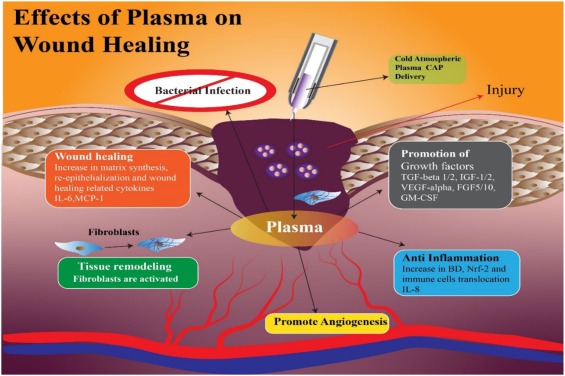
5. Tumor treatment
Existing research shows that cold plasma can effectively kill tumor cells and effectively induce tumor cell apoptosis, including liver cancer cells, pancreatic cancer cells, lung cancer cells, glioma cells, leukemia cells, cervical cancer cells, colon cancer cells, myeloma cells While killing tumor cells, CAP has less damage to surrounding normal tissues and cells [113]. Therefore, CAP, as an emerging technology, has shown great promise in tumor treatment and has become a research hotspot in the field of plasma biomedicine.
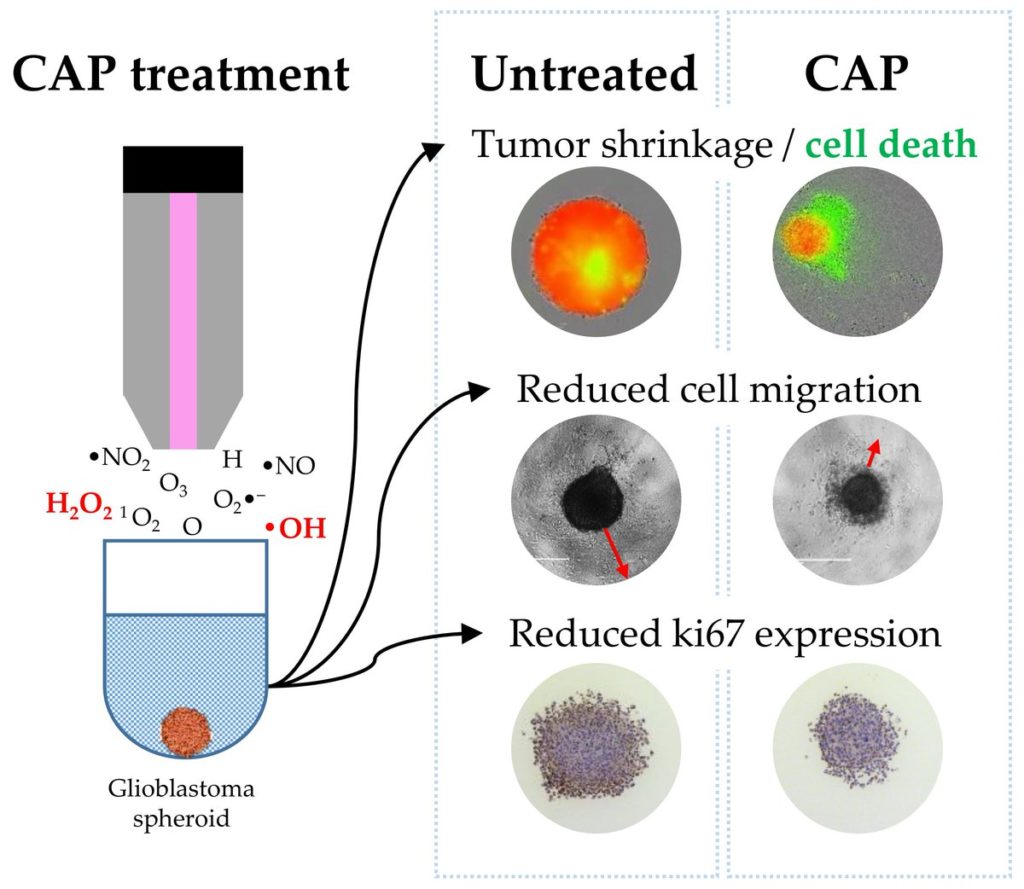
6. Plasmonic sensor could improve early cancer detection
A novel plasmonic sensor developed by the researchers will serve as a reliable early cancer detection method for biomarkers in the treatment of multiple cancers and ultimately other diseases. The sensor has been shown to reliably detect the presence of the cancer biomarker carcinoembryonic antigen (CEA) on the order of 1 ng/mL, with most people carrying at least some CEA with an average range of 3-5 ng/mL, study The researchers chose to focus on CEA because its presence at higher concentrations is an early indicator of many forms of cancer, including lung and prostate cancer.
It uses plasmonic sensing, which detects the interaction of sensitive nanoscale light species with biomolecules on the surface of the device, it is a small instrument, portable, inexpensive, and requires little expertise to perform detection, a simple finger Thorn will do. This is especially important for those who do not live near high-level medical facilities, including those in developing countries. Currently, detection methods for cancer biomarkers are being implemented in high-risk patients, especially those in remission, who require time, specialized equipment, and are labor-intensive, however, in the future, due to the portability and inexpensiveness of the method sex, which can be more easily given to any patient during routine examinations. This allows patients with elevated CEA concentrations to be treated even before cancer cells have spread in the body.
In conclusion, the plasmonic sensor and the cancer therapy device describe the plasma excitation of particles on the surface of a small metal layer. The energy of the particles in the shape of rice grains is very large, and the light that can be used for spectroscopy experiments is of the order of micromolecules. The plasma is greatly improved. With the speed and precision of spectroscopy, in other words, nanometer-scale plasmons can be used not only for accurate identification, but also to kill cancer cells.

